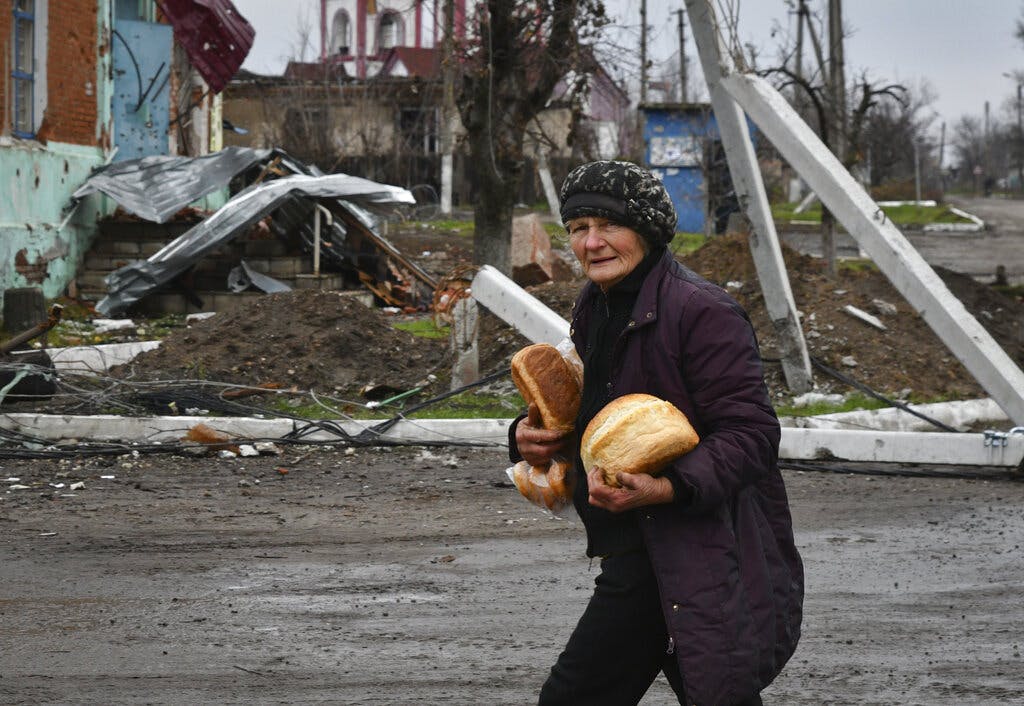Ukrainians Face ‘Kholodomor’ — Death by Cold
The Kremlin launched six waves of missile attacks on Ukraine’s energy infrastructure between October 10 and November 15.

Everyone knows about the Holocaust. During World War II, the Nazis killed 6 million Jews, including about 1 million from Ukraine.
Many people know about the Holodomor, or death by hunger. Between 1932 and 1933, the Kremlin carried out an artificial famine that killed about 4 million Ukrainians.
Now, with the first snows falling, Ukrainians face a new threat, Kholodomor, or death by cold.
According to Ukraine’s national grid operator, Ukrenergo, between October 10 and November 15, the Kremlin launched six waves of missile attacks on Ukraine’s energy infrastructure, payback for the humiliation Russia felt as its soldiers retreated from the west bank of the Dnipro River.
On Tuesday, almost 100 Russian missiles hit 15 key infrastructure sites, depriving Ukrainians of heat, power, and clean water. On Friday, Ukraine’s prime minister, Denys Shmyhal, reported the results of this Russian blitz: “Almost half of our energy system is disabled.”
On Wednesday, President Zelensky warned that 10 million Ukrainians, about a quarter of the pre-war population, have no power. In his nightly, televised fireside chat Mr. Zelensky said: “If we survive this winter, and we will definitely survive it, we will definitely win this war.”
Maxim, Timchenko, the CEO of Ukraine’s largest private energy company has told Ukrainians who can to leave the country for the winter to save power. “If they can find an alternative place to stay for another three or four months,” he told the BBC Saturday, “it will be very helpful to the system.” His company supplies about a quarter of Ukraine’s power.
With temperatures falling and Kyiv seeing its first winter snows, the capital’s mayor, Vitaliy Klitschko, is setting up 1,000 emergency heating centers. In the event of a complete blackout, city officials are drawing up plans for a total evacuation.
A city official, Mykola Povoroznyk, said Friday: “We are preparing for different scenarios, including a complete shutdown.” With a pre-war population of 3 million, Kyiv is Europe’s seventh most populous city.
Through controlled, rolling blackouts, energy officials are spreading the misery around all 24 regions of Ukraine. Without electricity, water systems will fail, rendering cities largely uninhabitable.
The architect of the attacks on civilian infrastructure is a Russian army general, Sergei Surovikin. Last month, he was appointed head of Russian forces in Ukraine.
Five years ago, as commander of Russian forces in Syria, General Surovikin was credited with using extensive air strikes against civilian targets to turn the tide of the war in favor of Syria’s dictator, Bashar al-Assad. Due to his brutality, his colleagues call him “General Armageddon.”
“Russia has launched hundreds of missiles and kamikaze drones at key infrastructure targets including Ukrainian power plants, large substations which facilitate the flow of electricity to consumers, high-voltage transmission lines, and distribution lines across the country,” Aura Sabadus wrote this week for the Atlantic Council.
“This bombing campaign is systematic in nature and appears to have been planned with the help of Russian technical experts who have a good understanding of Ukraine’s electricity infrastructure and weaknesses.”An international campaign is under way to supply Ukraine with heaters, transformers, mobile generators, repair equipment, tools, and fuel, Ms. Sabadus writes.
This campaign is led by the European Commission’s Emergency Response Coordination Center. Yet temperatures in Kyiv are forecast to drop below freezing this weekend. With two-thirds of Ukrainians living in apartments, the prospect of freezing in the dark could prompt the repeat flight of millions to Europe.
Since last spring, 1.5 million Ukrainian refugees have taken refuge in Poland, adding 4 percent to Poland’s population. As winter descends on Ukraine, flows to Poland have started again, hitting 20,000 a day last week.
In the past, Russians have shown callousness about energy disruptions to foreign civilian populations. On December 31, 2008, as Russia prepared a showdown with Ukraine over gas supplies, two Russian army soldiers presented a skit televised nationwide from the Russian Army Theater, Moscow’s largest theater. As the actors started to slowly turn a big wheel on a fake pipeline, the live audience of 1,900 laughed uproariously, chanting: “Turn it off. Turn it off.”
The next morning, Gazprom sharply reduced gas shipments to Ukraine and Eastern Europe. During the three-week shutdown, hundreds of people froze to death, largely in retirement homes in the Balkans. This winter, experts warn that thousands of Ukrainians are at risk of dying of cold.

